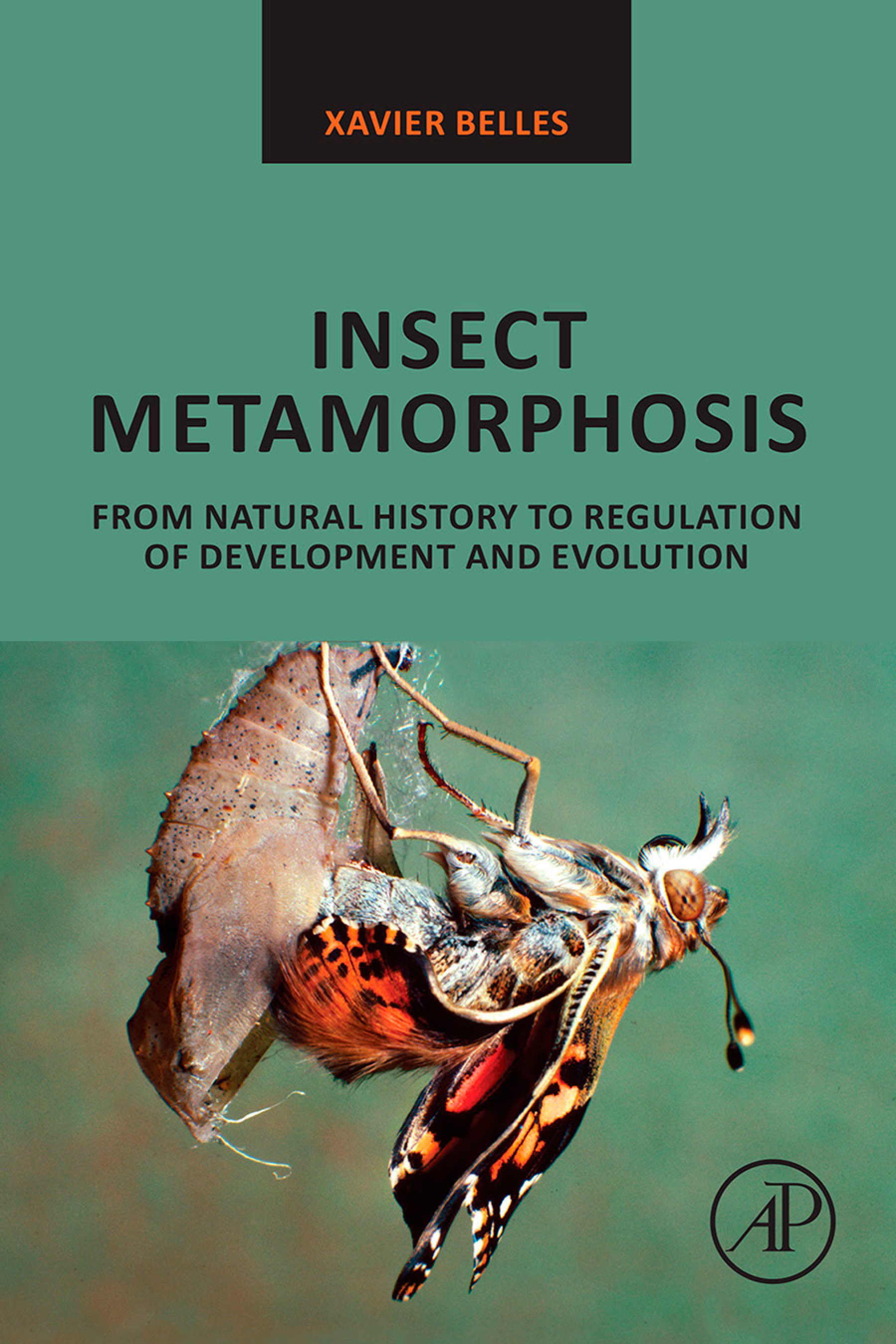"Insect Metamorphosis: From Natural History to Regulation of Development and Evolution", the new book of IBE researcher Xavier Belles, is out
"Insect Metamorphosis: From Natural History to Regulation of Development and Evolution", the new book of IBE researcher Xavier Belles, is out
"Insect Metamorphosis: From Natural History to Regulation of Development and Evolution", the new book of IBE researcher Xavier Belles, is out
Xavier Bellés, researcher of the Institute of Evolutionary Biology of Barcelona, joint institute of the CSIC and the Pompeu Fabra University, and one of the world's leading experts in insect metamorphosis, has just published "Insect Metamorphosis: From Natural History to Regulation of Development and Evolution" (Academic Press), a book where he synthesizes his 30 years of career unravelling metamorphosis.
 How does a caterpillar transform into a butterfly? That question, which sums up the wonder and mystery of insect metamorphosis, has built a timeless enigma, which has fascinated humankind since the earliest times. In insects, metamorphosis has been an extraordinarily successful evolutionary innovation. In fact, more than half of the species we have on Earth today are metamorphosing insects.
How does a caterpillar transform into a butterfly? That question, which sums up the wonder and mystery of insect metamorphosis, has built a timeless enigma, which has fascinated humankind since the earliest times. In insects, metamorphosis has been an extraordinarily successful evolutionary innovation. In fact, more than half of the species we have on Earth today are metamorphosing insects.
Now newly published "Insect Metamorphosis: From Natural History to Regulation of Development and Evolution" (Xavier Belles, Academic Press, 2020) explores the origin of insect metamorphosis, how the different types of metamorphoses evolved, and how they are regulated, delving into misconceptions and past treatments. With most of the present biodiversity on Earth composed of metamorphosing insects—approximately 1 million species currently described, with another 10-30 million still waiting to be discovered –, metamorphosis is presented as a one of the most successful innovations in insect evolution. As discussed in the book, this success has been largely due to the exquisitely precise mechanisms that regulate metamorphosis. Among them, those recently unravelled, which relate to the juvenile hormone, are shown to be of paramount importance. The evolution of these mechanisms naturally integrates into the theory of evolution by natural selection, an aspect that intrigued Darwin in his “On the Origin of Species”.
Researchers and students in insect biology, developmental biology, and general entomology, will find this book to be a comprehensive and updated review on insect metamorphosis, covering historical, naturalistic, biological, physiological and molecular facets, with an emphasis on evolutionary aspects.
Metamorphosis: a major evolutionary innovation
Metamorphosis is the process by which a juvenile insect, whose main activity is to eat and grow, becomes an adult, able to reproduce and perpetuate the species. It brings a lot of versatility and adaptation to the species that undergo the process, which could explain its blasting success in evolution. "When you change, you explore alternative options. This door that opens to alternative possibilities has been crucial in consolidating the role of metamorphosis in approximately half of the animals that exist today", says Belles. "Without metamorphosis we would have much less biodiversity, and probably we would have a much poorer pollination, for example, at least as we know it today", he says.
More on the book
"Insect metamorphosis [...]" gives general evolutionary biologists context on adult morphogenesis in its larger scope, including updated information that modifies the present conceptions on the evolution of complete metamorphosis. Although it aids researchers and students in biology, developmental biology or entomology interested in understanding metamorphosis in particular, it can also be of interest for those dealing with general development, growth and sexual maturation.
The book features updated knowledge from the past decade on the mechanisms of action of the juvenile hormone, the main doorkeeper of insect metamorphosis, and provides applied entomologists with recently updated data, especially on regulation, to better face the problems of pest control and management.
About Xavier Belles
Xavier Belles is Research Professor of the Spanish National Research Council (CSIC). He has been founder (2008) and first director (2008-2016) of the Institute of Evolutionary Biology (CSIC-Pompeu Fabra University), in Barcelona, where he still works. For more than 30 years, he has been studying insect metamorphosis and its evolution. Belles has published more than 300 scientific articles and over 10 books, most notably "Living two lives" (Prismas Prize to the best Science Communication book 2009), where he collects the evolution of ideas about insect metamorphosis from the ancient Egypt until today. He introduced the cockroach model in metamorphosis research, were he particularly investigated the molecular action of juvenile hormone and the role of microRNAs. As systematic entomologist, Belles has discovered over 122 taxa new to science, being Falsogastrallus teresae his favourite discovered species - named after his wife, Teresa.
About Academic Press
Academic Press has been a leading publisher of scientific books for over 70 years. Best known throughout the international scientific community for the superior quality content of its publications, Academic Press’ extensive list of renowned authors includes leading experts in the scientific world, Nobel Prize winners, and honoured scientific researchers.
